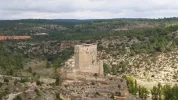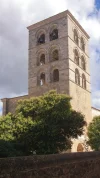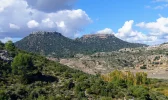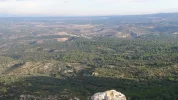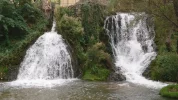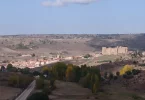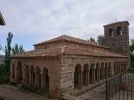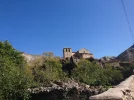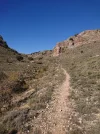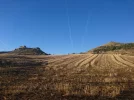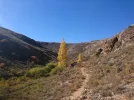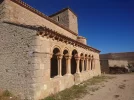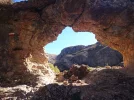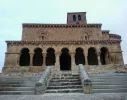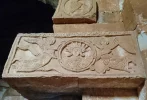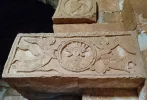- Time of past OR future Camino
- Except the Francés
Note from the mods: The first part of @alansykes’ Ruta de la Lana was posted live on this thread. Four months later, he returned to Campillo and continued where he had left off.
An hour's walk, a train, a metro, a plane, a bus, a night in Alicante, another train and two more buses found me back in Campillo de Altobuey, in Cuenca province, ready to restart my Lana camino broken off in April.
María, the helpful person in charge of the polidiportivo, put out a couple of sleeping mats and a blanket and gave me the key to the visitors' changing room. Loos and showers, free.
I had been hoping to make a gentle restart to my camino, stopping in a casa rural in Paracuellos de la Vega, ~18km off, but as it's a holiday week I thought I'd better ring to check they weren't full. They weren't, they have closed for invierno (in early October?). When I got to Paracuellos at 11.20 in the morning, there was a choice between trying to find somewhere else to stay or forging on. Paracuellos is a tiny village with a spectacular pentagonal castle dominating a gorge, and not a lot else, and its only bar was closing for the day at noon. So I took a deep breath and forged on, reaching Monteagudo de las Salinas at about 5pm, somewhat knackered by 36km, probably half on tarmac. With increasingly dodgy knees, I had thought 32km was my new limit, so it was a great morale boost to find I can still do a bit more, even if I hope I don't have to.
An hour's walk, a train, a metro, a plane, a bus, a night in Alicante, another train and two more buses found me back in Campillo de Altobuey, in Cuenca province, ready to restart my Lana camino broken off in April.
María, the helpful person in charge of the polidiportivo, put out a couple of sleeping mats and a blanket and gave me the key to the visitors' changing room. Loos and showers, free.
I had been hoping to make a gentle restart to my camino, stopping in a casa rural in Paracuellos de la Vega, ~18km off, but as it's a holiday week I thought I'd better ring to check they weren't full. They weren't, they have closed for invierno (in early October?). When I got to Paracuellos at 11.20 in the morning, there was a choice between trying to find somewhere else to stay or forging on. Paracuellos is a tiny village with a spectacular pentagonal castle dominating a gorge, and not a lot else, and its only bar was closing for the day at noon. So I took a deep breath and forged on, reaching Monteagudo de las Salinas at about 5pm, somewhat knackered by 36km, probably half on tarmac. With increasingly dodgy knees, I had thought 32km was my new limit, so it was a great morale boost to find I can still do a bit more, even if I hope I don't have to.


